Wooden houses have always been made in Romania. Because the wood is "exposed", we tend to think that they are only specific to mountain areas. Not so! Even if it was not visible, wood was the structure of the house. The thatched houses that were built in the lowlands, where wood was scarce and very precious (see Moromete's acacia), had wooden pillars, beams, the base of the house and the roof structure (asteriala). The fact that there is now a real wooden house industry in Romania is a natural consequence. Classic or modern, made of round or square logs or prefabricated walls, wooden houses have reached the furthest corners of Europe, with Romanian builders being appreciated in countries with tradition such as Norway, Finland, France or Germany.
Wood, clay and stone were the building materials on which the peasant relied in the past. In the north, north-west and central parts of the country, where there were impressive forests, wood was the basic raw material and houses were built largely of wood. The insulation between the logs was made of clay and the foundations of stone. In other areas, where forests were scarcer, wood was combined with clay and straw for walls. But they always kept some wood to embellish the house. Carved pillars were added, wood embroidery on the eaves, and carved symbol beams enriched the facades.
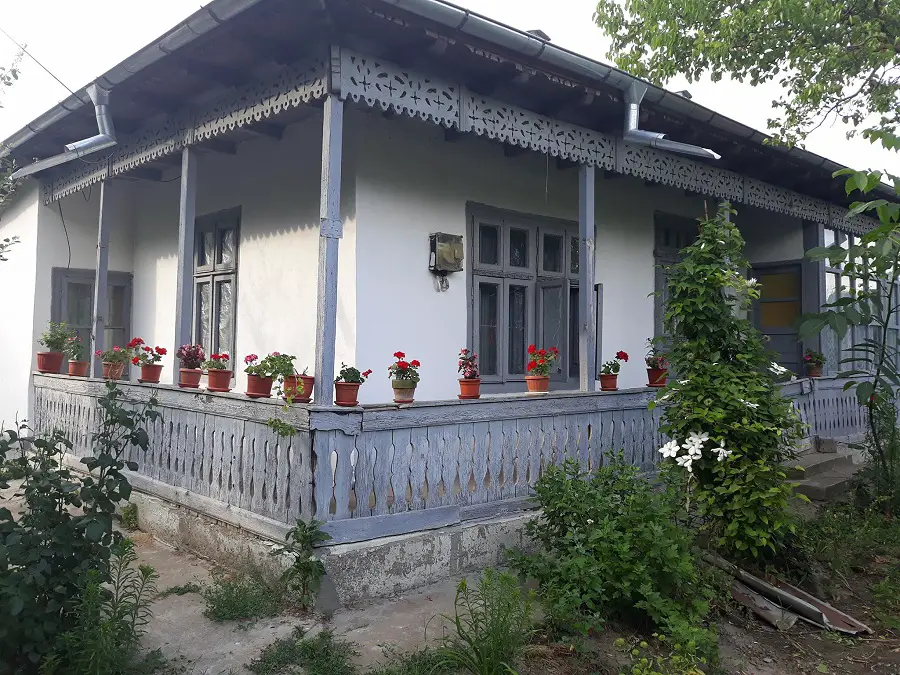
Traditional peasant houses
The main characteristic of old, traditional houses is functionality. The houses were simple, not large, just enough for everyday life. Each room existed for a specific purpose, not built unnecessarily, maintaining a certain harmony of proportions. Each area had its own particular features, which were influenced by the existing means of construction and foreign influences. In Bucovina we can see the influence of the Austrian, just as in Dobrogea we discover the Tatar or Turkish influences.
But there is one element common to all parts of the country - the porch, also called the "cerdac". It is one of the specific elements of Romanian rural architecture. We find it in all areas, more or less emphasized, on one side, on 3 or 4 sides of the house, simple, only crossed by wooden posts or in the form of a balcony. Basically, it is the porch that greets you when you enter a country house.
The porch was made of clay or clay mixed with stone and always covered with eaves. In the south and on the plains it was lower, while in the high hill, mountain and northern areas it was higher. In wooden houses, the porch was sometimes covered with wood.
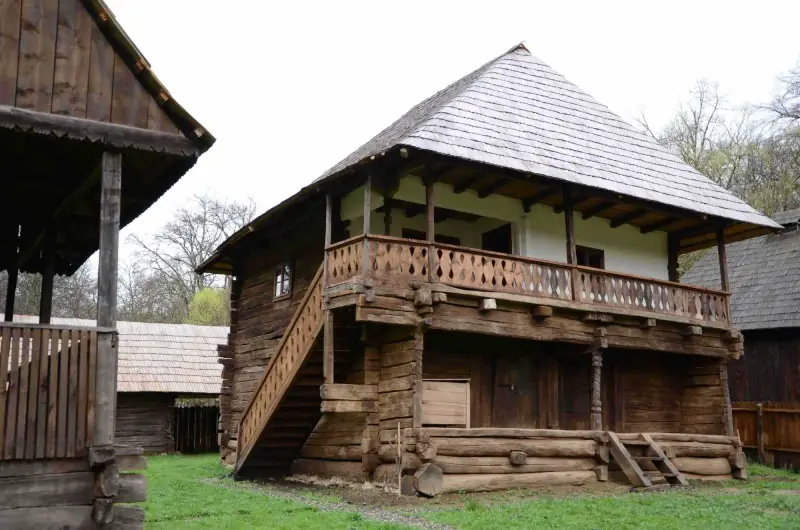
Building methods in hilly and mountainous areas, where wood was not a problem
The materials used in the past to build houses were wood, clay, straw, reeds, coir. The more wooded the area, the more wood was used in construction.
In the north and north-west - Bucovina, Maramures, Trotuș Valley - but also in the other mountain areas, a lot of wood was used for building. Initially, round wood was used, as it was cut from the forest, then houses made of hewn beams, rectangular in section, appeared. The beams were hewn round at the ends and laid on top of each other to make the corner of the house. In Bukovina the joints were called "cheotori".
The house was built on a foundation of river stone over which thick wooden beams were laid. What was obtained was called the house's footing and on it the construction was started. The roof was also made of wood. Small pieces were carved out and laid one on top of the other - shingles or shingles, as the longer ones were called.
There were specific elements for each area - gates in Maramures or the attic houses in the Trotuș Valley are just two examples.
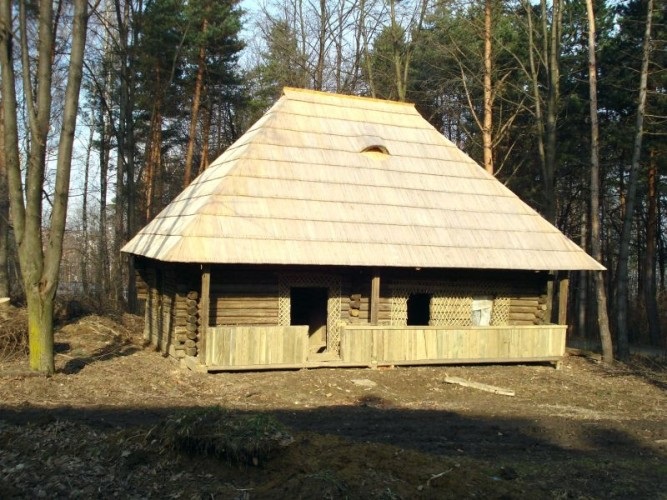
Building houses in wood-poor areas
Where it was harder to find, wood was used only to make the structure. On the outline of the beams forming the base of the house, vertical posts rose at the corners and in front of the doors and windows.. The top end of the posts was attached to another wooden frame, the ceiling frame. The structure was reinforced with oblique beams. Horizontal battens were battened on either side to form a hollow wall which was then filled with a mixture of clay and straw.
After being loaded with clay, slats were beaten on the outside of the walls at a 45º angle. The short slats were beaten one row in one direction and the next in the opposite direction. Up to the top there were several such rows stiffening the house. Between the slats thin clay was filled and then glazed. On the roof, which was also made of a wooden structure, straw or reeds were laid.
In lowland areas without forests, the oblique beams were replaced by thicker branches and the short spikes were no longer beaten. Clay predominated, mixed with straw, coir and other annuals to make it tougher and stronger.
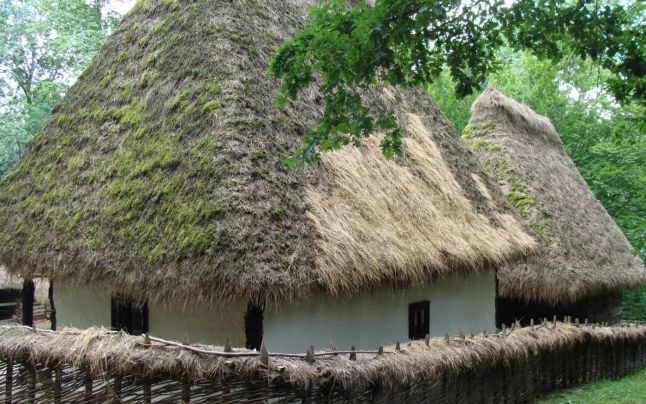
Types of houses now being built in Romania
Houses made of prefabricated structures. In these houses, the walls are made in the factory from materials laid layer upon layer (including insulation), like a sandwich, depending on the customer's choice. Even the exterior finishes can be made in the factory on request. The walls are then transported to the site where the house will be built. There they are joined and fitted to the foundation made by the owner.
One manufacturer of such houses is Litarh from Valea Moldovei, Suceava. His portfolio includes houses built in France, Belgium, Austria, Germany, Italy, Norway and Romania. Romanians have begun to appreciate these houses because they are built quickly and at lower cost than brick. But you need to know that you need a very clear plan of the house you want to build. They don't make houses that they then sell but they make houses according to the customer's design. They can also help you with the design, but you need to know very well what you want.
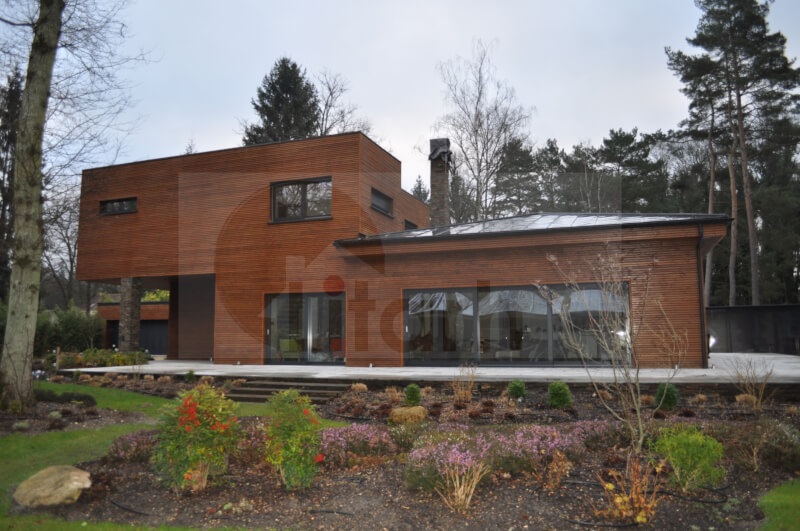
Passive houses. They are the most modern version of wooden houses. They are built using state-of-the-art technologies for the most economical operation. It's the option for young people in the middle class who want sustainable homes that are in tune with the times. Dimmer in Comănești is a well-known name when it comes to such houses. The company was part of the team that built Buhnici House, a house that operates without external energy supply.
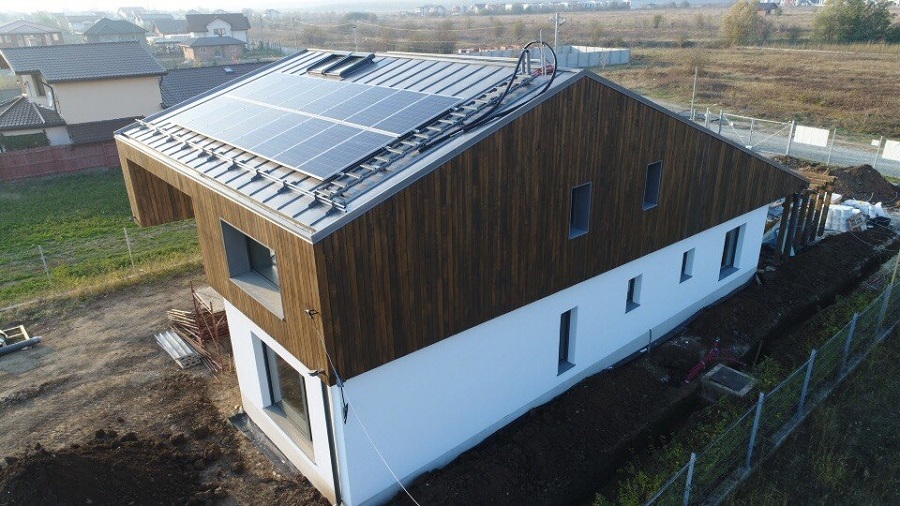
Round wooden houses. In the north of the country, there are builders of Canadian-made roundwood houses. The logs are assembled by cherting, without metal fittings. The logs are machined at the ends to fit together perfectly. Natural insulation is placed in the joint area so that the house is perfectly insulated. The logs are stripped of their bark by hydraulic processing, not by chipping, so that the wood remains perfectly smooth. Such houses are made at Log Home from Vatra Dornei or Poiana Construct House in Poiana Stampei.
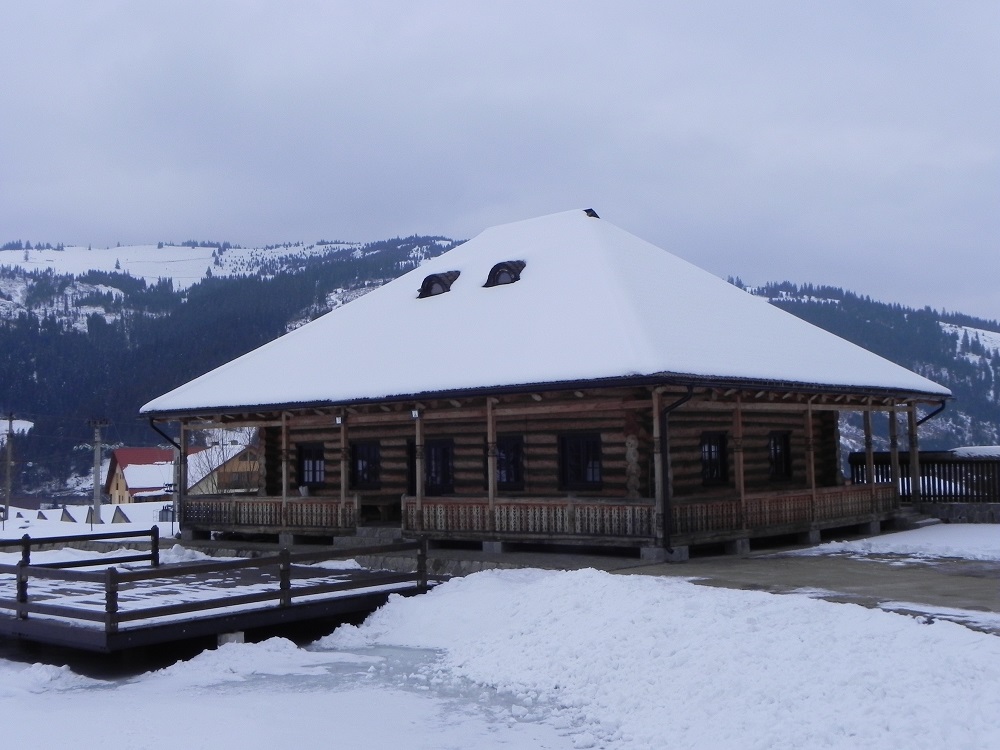
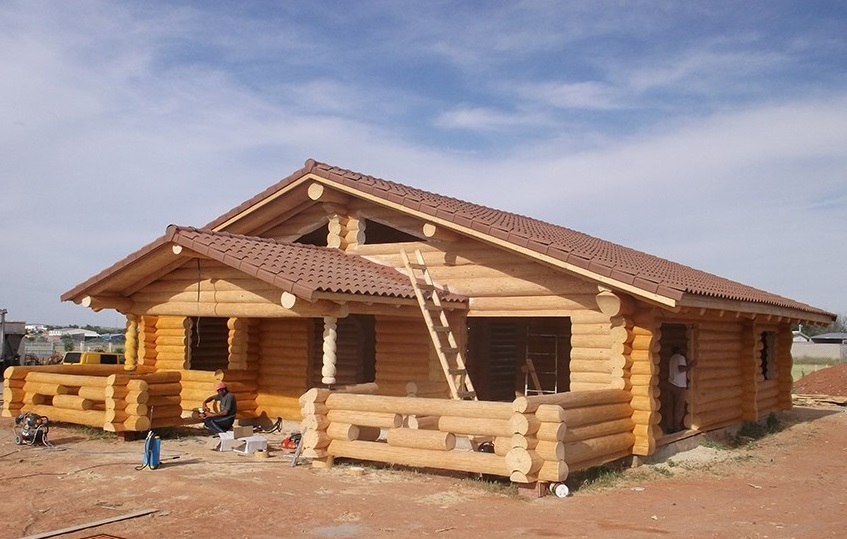
Construction on lamellar beam structure. Lamellar beams (glulam) are very strong and elastic. They are made by gluing several layers of wood together along the grain. Glulam structures have a very high load-bearing capacity, allowing the construction of large open spaces without strength problems. One manufacturer of such structures is Technical Switzerland. Details of a lamellar beam construction they made in Mamaia can be found at here.
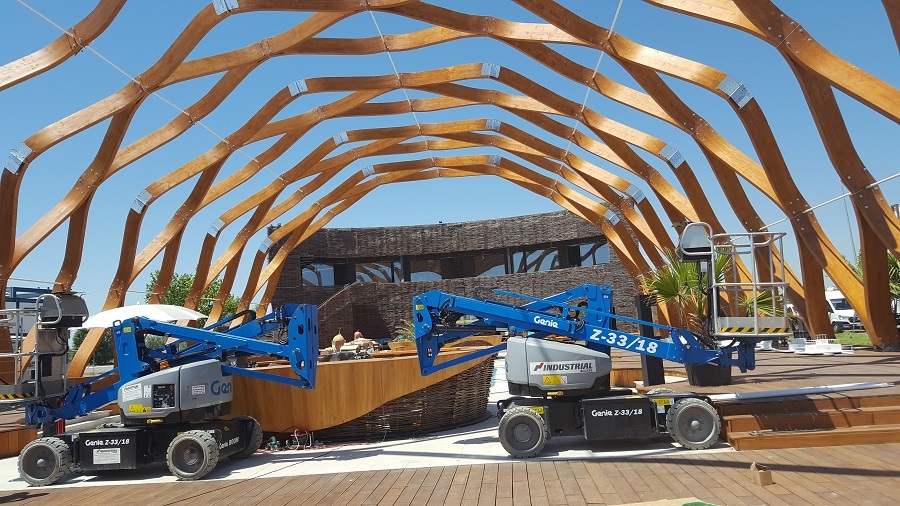
Cottages on wheels. They are softwood houses built on a chassis to be towed by a machine that can pull up to a maximum of 3.5 t. The houses are 2.54 m wide, 4 m high and between 4 and 7 m long, depending on the model and the customer's requirements. The house is basically an open space with only a separate bathroom. They are well insulated and can be lived in both summer and winter. Builders of such houses we have in Oradea - Tiny Wunder House - or Miercurea Ciuc - Eco Tiny House.
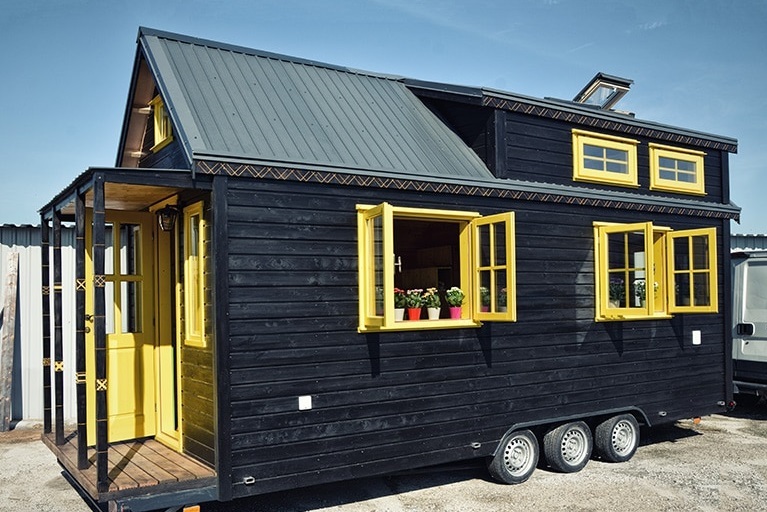
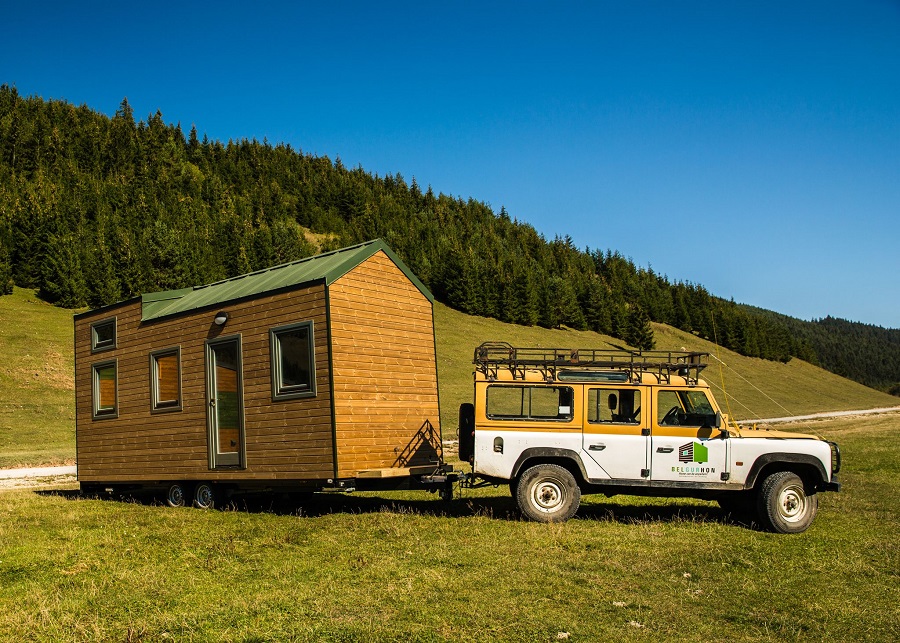
As you can see the offer is very rich. You just have to decide what type of wooden house you want.



















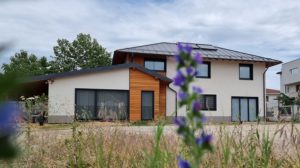
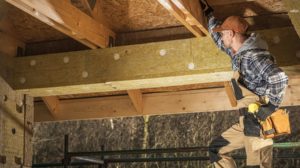

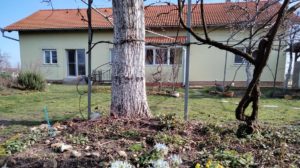

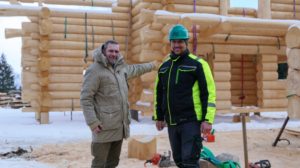

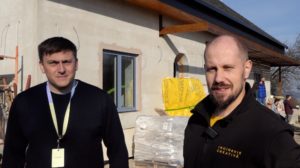

Add comment